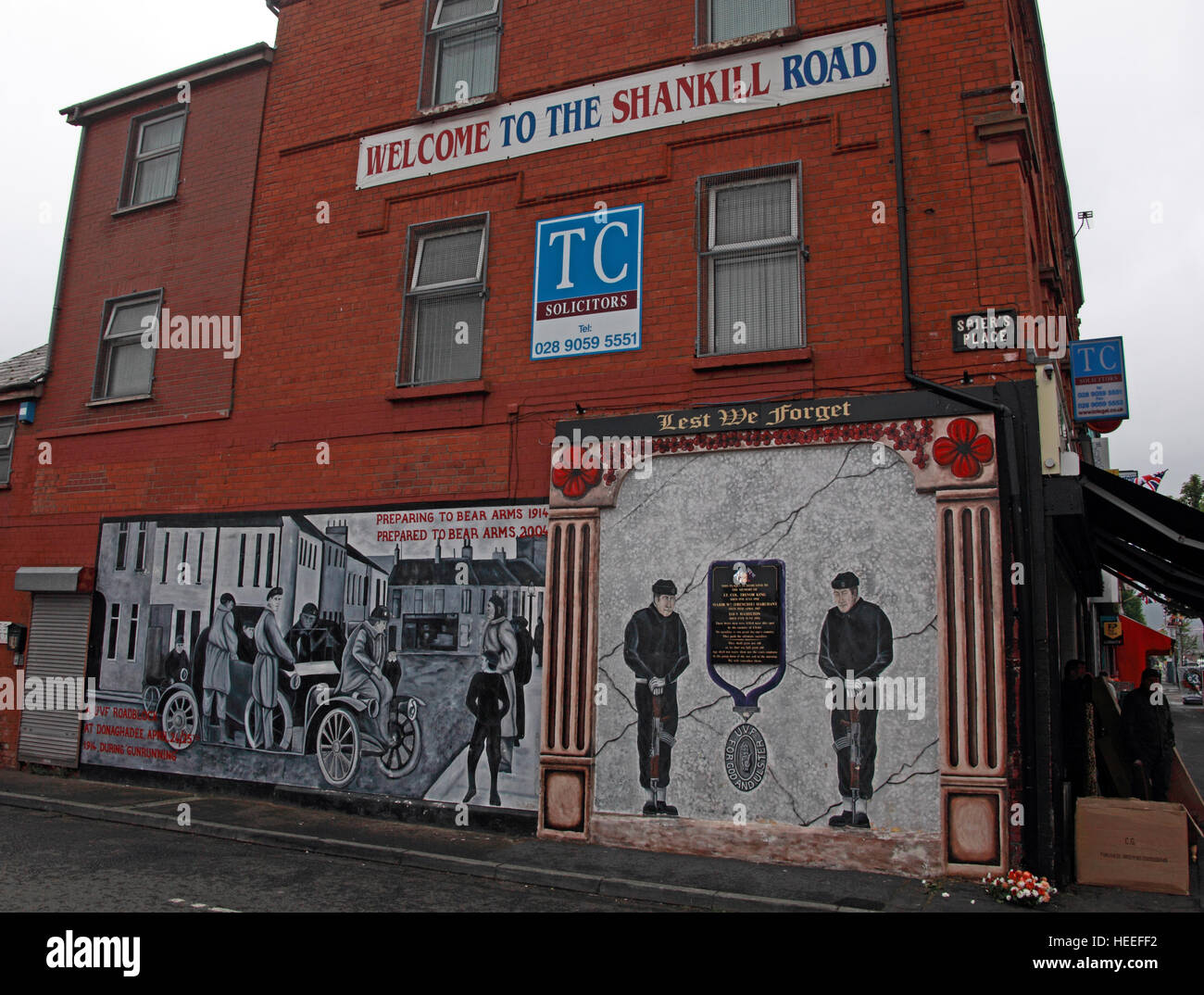Belfast Unionist, Loyalist Mural & Welcome to the Shankill Road

Image details
Contributor:
Tony Smith / Alamy Stock PhotoImage ID:
HEEFF2File size:
50.3 MB (2.2 MB Compressed download)Releases:
Model - no | Property - noDo I need a release?Dimensions:
4816 x 3648 px | 40.8 x 30.9 cm | 16.1 x 12.2 inches | 300dpiDate taken:
5 May 2011Location:
West Belfast, Northern Ireland, UKMore information:
Murals in Northern Ireland have become symbols of Northern Ireland, depicting the region's past and present political and religious divisions. Belfast and Derry contain arguably the most famous political murals in Europe. It is believed that almost 2, 000 murals have been documented since the 1970s. In 2014, the book, The Belfast Mural Guide estimated that, in Belfast, there were approximately 300 quality murals on display, with many more in varying degrees of age and decay. Murals commemorate, communicate and display aspects of culture and history. The themes of murals often reflect what is important to a particular community. A mural therefore exists to express an idea or message and could generally be seen as reflecting values held dear to that community. In Irish republican areas the themes of murals can range from the 1981 Irish hunger strike, with particular emphasis on strike leader Bobby Sands; murals of international solidarity with revolutionary groups are equally common, as are those which highlight a particular issue, for example the Ballymurphy Massacre or the McGurk's Bar bombing. In working class unionist communities, murals are used to promote Ulster loyalist paramilitary groups such as the Ulster Defence Association and Ulster Volunteer Force and commemorate their deceased members. However traditional themes such as William III of England and the Battle of the Boyne, the Battle of the Somme and the 36th Ulster Division are equally common